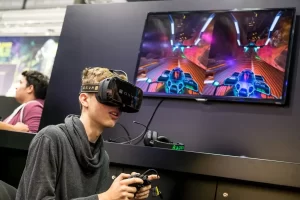
The world of gaming has become immensely popular, attracting players of all ages and backgrounds. However, designing games that cater to the specific needs and preferences of neurodivergent players comes with unique challenges. Neurodivergence encompasses a range of conditions such as autism, ADHD, dyslexia, and more. These players require carefully crafted game mechanics, accessibility features, and design considerations to provide an inclusive gaming experience. In this article, we explore some of the challenges faced by game designers when creating games for neurodivergent players.
Understanding Neurodivergence
Neurodivergent individuals have diverse cognitive processes and sensory sensitivities that differ from the typical population. This means game designers must take into account various aspects such as visual and auditory perception, information processing, and potential difficulties in social interaction. Every player’s neurodivergence is unique, so it is crucial to design games that are adaptable and customizable.
Sensory Overload and Sensitivity
Many neurodivergent players experience sensory overload or sensitivity to certain environmental stimuli. Game designers should consider incorporating options to adjust brightness, contrast, and sound frequencies within their games. Avoiding rapidly flashing lights or sudden loud noises can prevent triggering negative responses or anxiety. Furthermore, providing customization options for filtering visual effects or reducing distracting elements can significantly enhance gameplay for neurodivergent players.
Communication and Social Interaction
Some neurodivergent players struggle with communication and social interaction, making multiplayer games challenging. Game designers can tackle this issue by integrating in-game chat features that include text-to-speech and speech-to-text functionality. Offering alternative communication methods, such as customizable emotes or predesigned phrases, fosters inclusivity and enables neurodivergent players to participate and collaborate effectively within online gaming communities.
Clear Instructions and Game Progression
For neurodivergent players with cognitive processing differences, clear instructions and logical game progression are essential. Designers should prioritize creating tutorials that are easy to understand and follow, breaking down complex tasks into smaller, manageable steps. Additionally, incorporating visual cues, symbols, and tooltips can provide additional guidance without relying solely on textual instructions. Striking a balance between challenge and accessibility is crucial in ensuring an engaging and rewarding gameplay experience for all neurodivergent players.
Attention and Focus Management
ADHD (Attention-Deficit/Hyperactivity Disorder) is another neurodivergent condition that requires particular attention when designing games. Players with ADHD may have difficulties maintaining focus or may become easily overwhelmed by excessive stimuli. Developers can overcome these challenges by implementing features such as variable pacing, adjustable difficulty settings, and clear objectives. Breaks, reminders, and performance feedback are helpful tools for assisting players with ADHD, allowing them to manage their attention more effectively throughout the game.
Accessibility Features
Designing games with accessibility in mind not only benefits neurodivergent individuals but also promotes inclusivity for all players. Features such as customizable font sizes, colorblind modes, and alternative control schemes enhance the overall accessibility of games. Additionally, providing options for subtitles, closed captions, and audio description ensures that players with various sensory needs can engage fully with the game’s narrative and dialogue.
User Testing and Feedback
One of the most effective strategies for designing games that cater to neurodivergent players is involving them directly in the development process. Conducting user testing and actively seeking feedback from neurodivergent individuals can provide valuable insights into areas needing improvement. By engaging with the community, developers can refine gameplay elements and accessibility features, creating more inclusive gaming experiences.
Conclusion
Designing games for neurodivergent players presents a significant challenge for game developers. By understanding the specific needs and preferences of neurodivergent individuals, implementing inclusive design practices, and incorporating adaptable features, game designers can create experiences that are accessible and enjoyable for all players. As the gaming industry continues to evolve, embracing neurodiversity in game design will lead to a more inclusive and vibrant gaming landscape.


